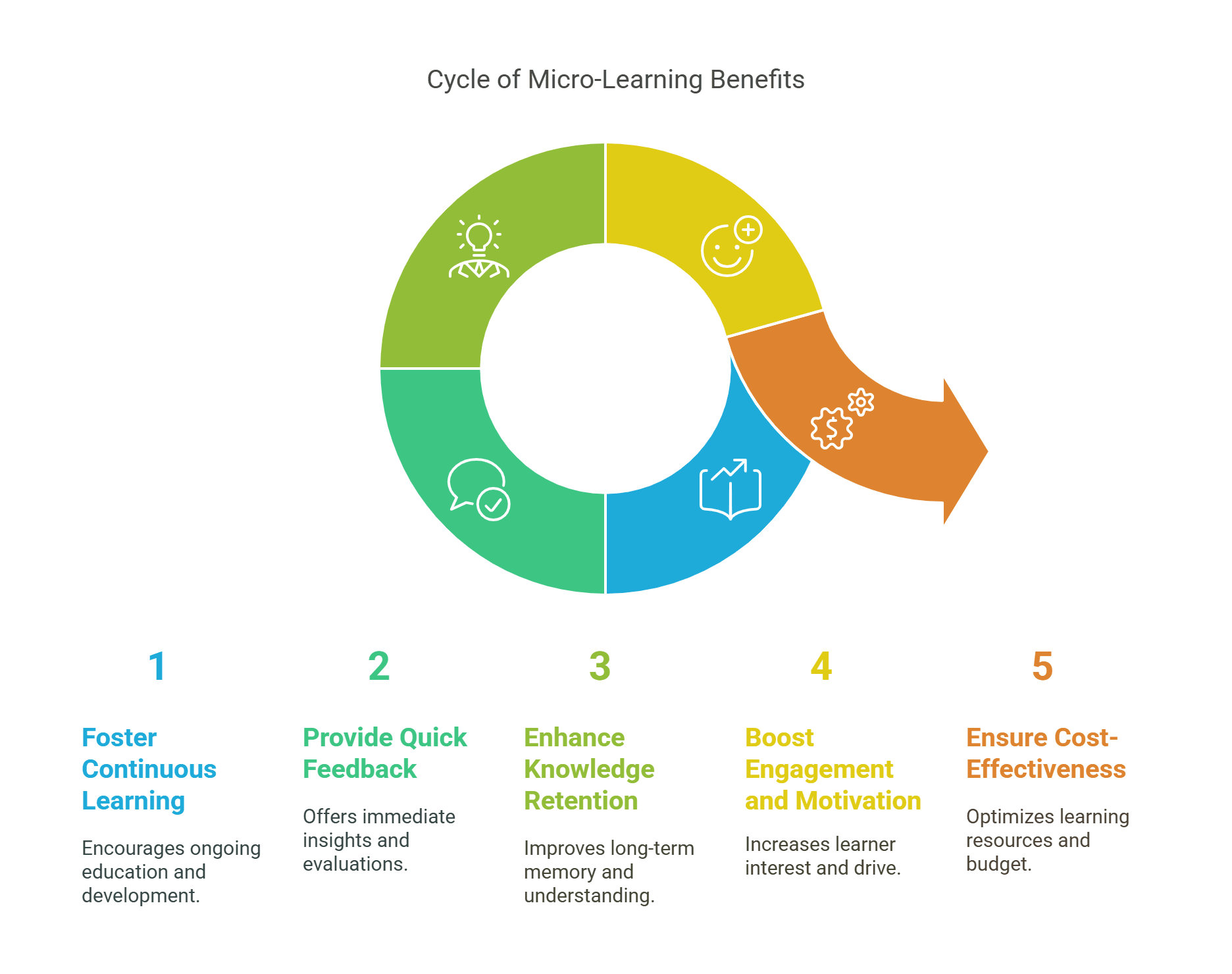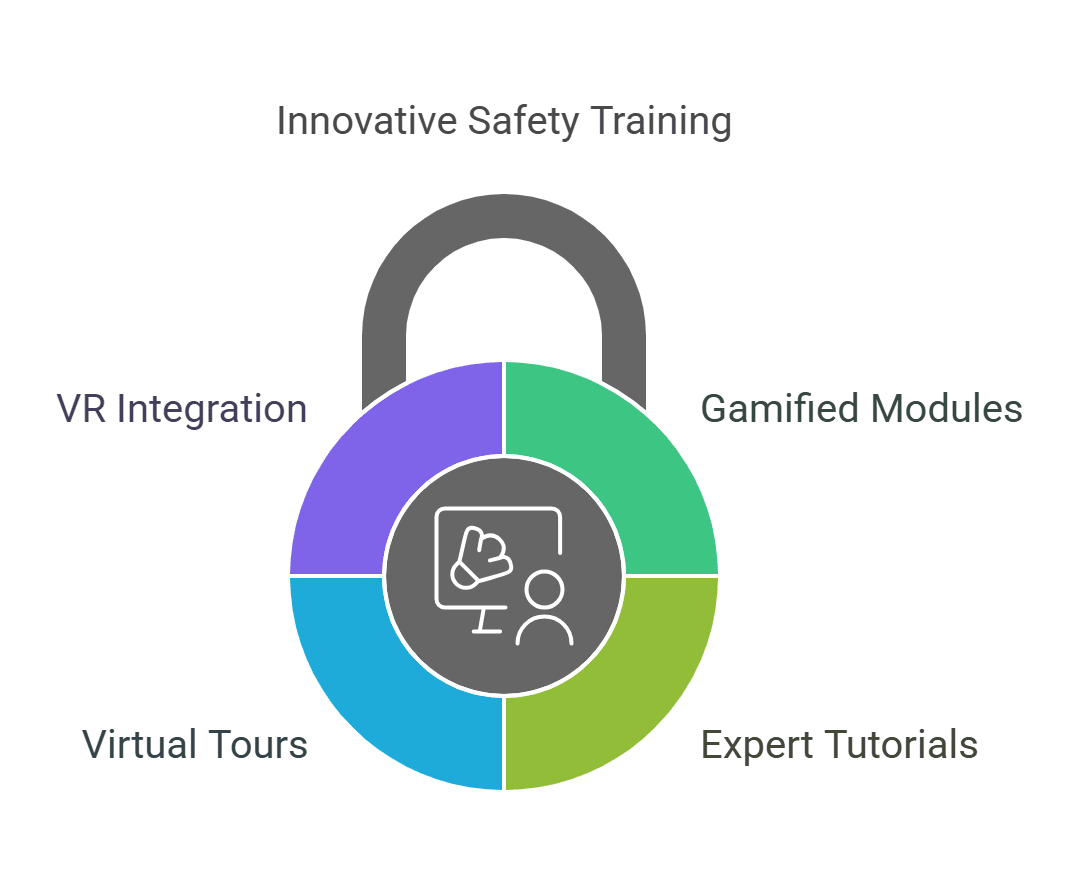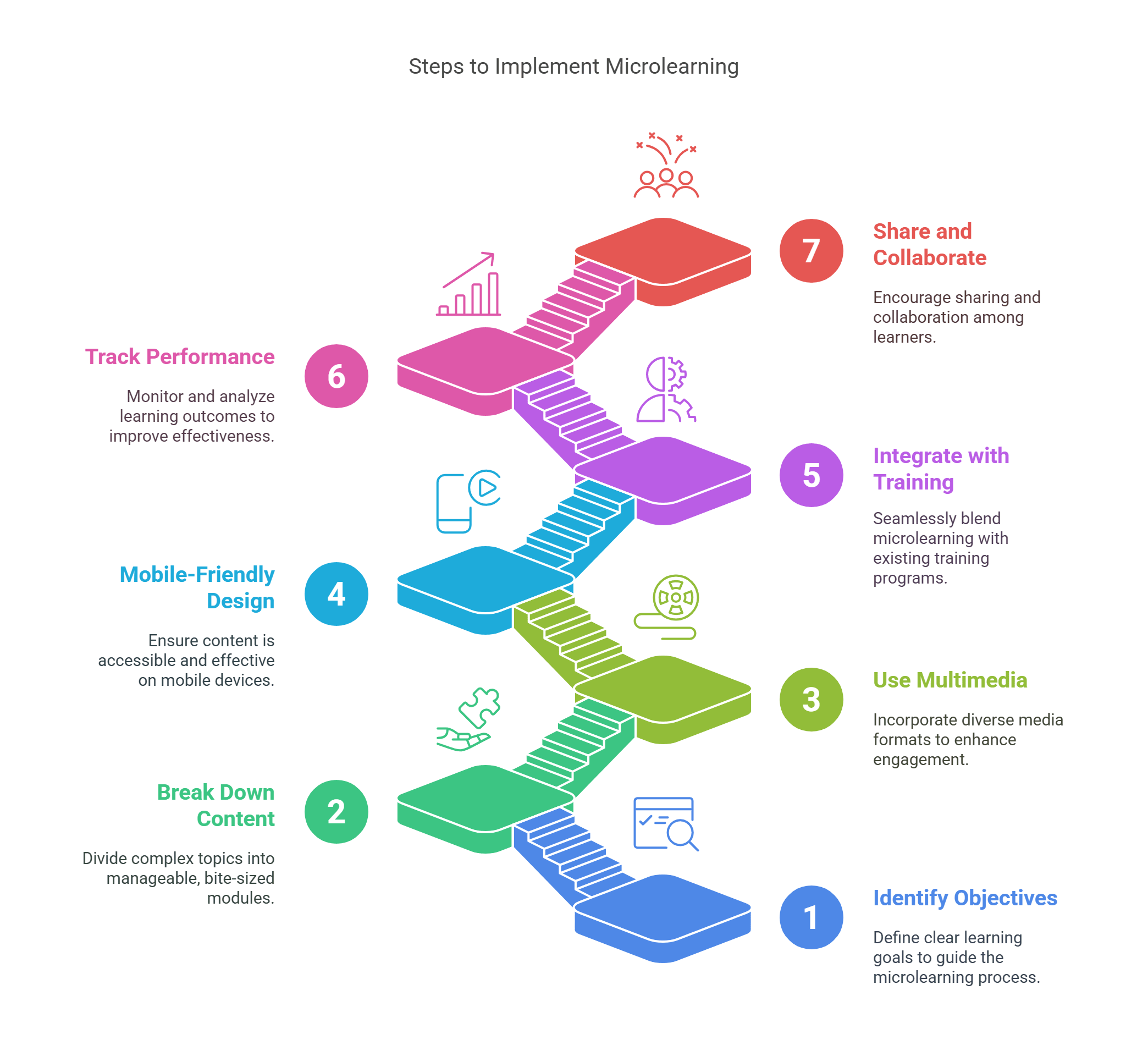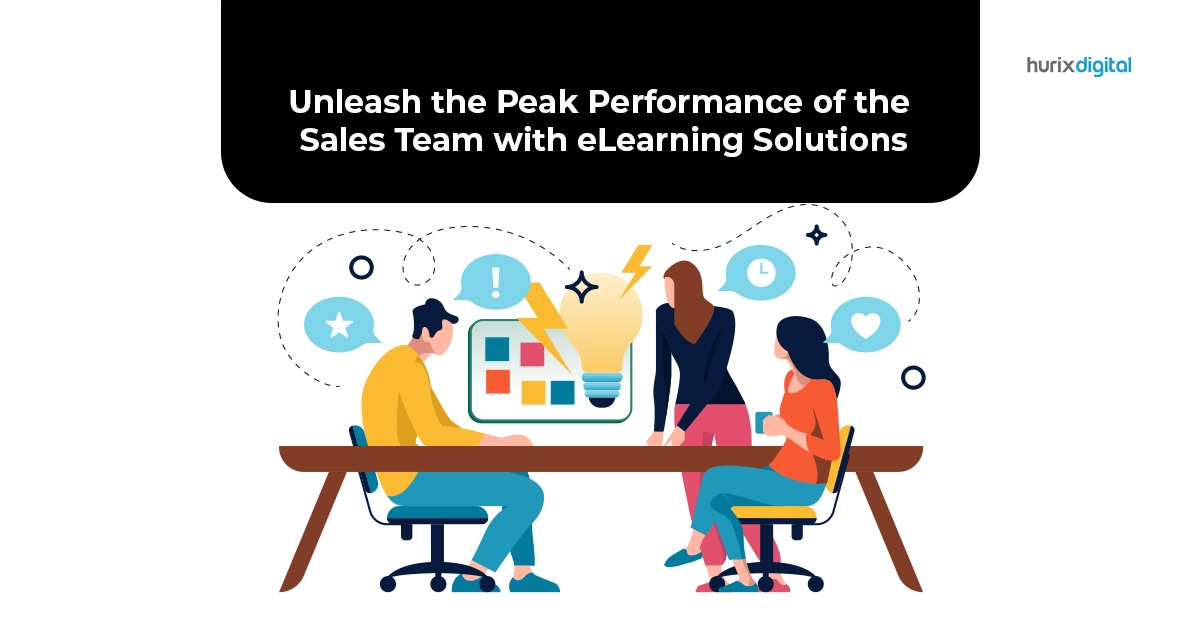
How Bite-Sized Training is Changing the Way We Learn at Work
Summarize with:
In today’s fast-paced work environment, traditional training methods often fail to keep employees engaged and retain crucial information. This is where bite-sized training, also known as microlearning, is transforming workplace learning. By delivering short, focused learning modules, organizations can enhance knowledge retention, improve workplace safety, and boost employee performance. Whether it is safety training or sales enablement, bite-sized learning makes complex concepts easier to grasp and apply.
In this regard, micro-learning is a powerful pedagogical approach focusing on delivering information quickly and efficiently. Today, lengthy presentations and other traditional learning modes are being replaced by micro-learning. The micro-learning market is expected to grow at a CAGR of 13.13% between 2024 and 2029 and will reach $4.87 billion by 2029.
Corporates are also trying to embed micro-learning into the everyday flow of work, fostering active learning and skill development. In fact, according to research conducted by the Aberdeen Group, organizations rated as “Best in Class” are 60% more likely to favor micro-learning for staff development.
Table of Contents:
- What is Microlearning?
- What are the Benefits of Micro-Learning?
- What is the Impact of Microlearning on Safety Training?
- Five Steps to Develop Effective Microlearning Modules for Safety
- Four Microlearning Ideas for Safety Training
- How to Successfully Implement Microlearning in the Workplace?
- Conclusion
What is Microlearning?
Microlearning, a term coined in 2003 by Research Studios Austria, is a cutting-edge method of education that presents targeted content in brief, easily understood modules. The modules, which usually last three to five minutes, simplify difficult subjects into digestible bits that are easier to understand and remember.
As the name suggests, micro-learning refers to learning delivered in bite-sized chunks. The bite-sized information ranges from a few minutes to around 20 minutes.
Moreover, the bite-sized learning content is strategically designed to address the specific learning needs of busy professionals. It also fosters continuous learning, allowing professionals to access and absorb information easily during short breaks.
In micro-learning, complex information is broken down into manageable chunks to ensure learning efficiency. Due to its highly optimized results, micro-learning is becoming increasingly popular, and the market size is expected to reach $4.87 billion by 2029.

What are the Benefits of Micro-Learning?
Due to its many advantages, microlearning is a preferred method for information acquisition and skill development in various industries, including customized sales training. Some of the key advantages of microlearning include the following:
1. Continuous Learning Culture
Micro-learning fosters a continuous learning culture due to its flexibility and convenience. Working professionals can choose the skills or areas that need immediate attention and address those with micro-learning content. This also ensures that employees can learn skills directly related to their roles.
2. Quick Feedback and Assessment
The bite-sized learning content also includes relevant quizzes and assessments to monitor learners’ progress. After each module, learners can take quizzes to gauge their understanding and focus on areas for improvement.
Nowadays, digital tools and artificial intelligence have integrated real-time feedback mechanisms into micro-learning, enhancing effectiveness and supporting uninterrupted learning.
3. Improved Knowledge Retention
Microlearning makes information more easily retained in brief, concentrated bursts. Microlearning modules featuring spaced repetition and reinforcement of essential concepts can result in higher retention rates than conventional training approaches.
Salespeople who must swiftly retain facts during client meetings may significantly benefit from this and enhance their sales performance.
4. Engagement and Motivation
Besides quizzes and assessments, micro-learning employs multimedia elements to enhance engagement and employee productivity. Elements like gamification, videos, and virtual reality make learning more enjoyable and help maintain interest throughout the training session.
5. Cost-Effectiveness
Unlike traditional training, micro-learning does not involve expenses related to instructors’ fees, traveling costs, venue booking, and more. With various digital tools and platforms, learners can learn anytime and anywhere at their convenience.
Organizations and companies can update the micro-learning content quickly and more regularly. Consequently, micro-learning is often more cost-effective and impactful than traditional training methods.
What is the Impact of Microlearning on Safety Training?
Understanding microlearning goes beyond just its definition. To fully utilize its potential, knowing how it fits in with workplace safety training is vital. Here are seven key advantages of these bite-sized training modules to highlight their significant impact,
- Mitigates Traditional Training Challenges: Traditional safety training was often delivered with the intent of thorough education. This often leads to lengthy sessions and information overload. Microlearning mitigates this by delivering shorter and crisper bite-sized modules that do not have this burden or risk.
- High Accessibility: A key advantage of bite-sized training is that its modules are easy to store, deliver, and access. For professionals who have shorter breaks in their day, this accessibility allows them to learn consistently without time management concerns.
- Focused Learning for Better Retention: Bite-sized training content focuses on delivering a key learning point in each module. This keeps employees engaged and boosts retention, leading to a deeper understanding of key safety practices.
- Engaging Formats Boost Motivation: Microlearning utilizes video, animation, gamification, and interactive elements and eliminates the idea of boring sessions. This directly boosts engagement and the motivation to keep learning.
- Ensures Compliance: Besides an active safety culture and higher engagement, regular updates to safety compliance are easy to incorporate into microlearning modules. This keeps all professionals up to date and compliant with the evolving standards.
- Documentation Made Easy: Completion certificates from bite-size training modules show incremental and constant development in safety practices. These certificates are valuable records for demonstrating compliance efforts during audits.
Five Steps to Develop Effective Microlearning Modules for Safety
The advantages we’ve covered are just a few of the many that show bite-sized training is much more effective than traditional, lengthy, and stale modules. Here is a list of aspects that must be in place to develop an effective employee training module unique to your business needs and values,
- Identify Training Needs: Conduct a needs assessment to pinpoint specific safety topics requiring training. This may be done through an internal safety audit to review your business’s current operations and an employee survey to understand their current safety awareness levels.
- Set Clear Learning Objectives: Based on the data you’ve gathered and your training needs, establish what employees should know and be able to do after completing the module.
- Choose Engaging Formats: Training modules must foster a learning culture. Use engaging formats like infographics, animations, interactive quizzes, and micro-simulations so that learners can easily retain knowledge and practice their learning.
- Incorporate Real-World Scenarios: Minimising the gap between theory and reality helps improve learners’ decision-making and understanding. Incorporate relatable workplace scenarios to boost knowledge transfer and accuracy while using what they’ve learned.
- Ensure Mobile Compatability: With a mobile learning retention rate of 45% higher than face-to-face learning, the impact of delivering mobile compatibility bite-sized learning modules is huge. Integrating mobile learning is also a great way for professionals to access their learning content on the go, boosting their accessibility and comfort.
Four Microlearning Ideas for Safety Training
With the standard must-have elements for bite-sized learning in place, keeping your training content relevant amidst the evolving learning landscape is vital. Below are four innovative ideas that boost the overall impact of your bite-size safety training modules,
1. Gamified Microlearning Modules
Gamification is a key and innovative element that employs gaming elements like challenges, contests, and rewards in the learning modules. Safety training can be kept exciting and engaging when imbued with gamification.
It also helps spark competitive spirits in professionals and allows the business to review an employee’s learning progress. When incorporated into microlearning, the training material takes on the image of being a quick game, all while delivering easy-to-retain content.
2. Quick Tutorials with Industry Experts
Industry experts have developed expertise after making huge accomplishments in their field. They influence the professional network, and just like social media celebrities, they greatly impact the reliability of content.
Quick tutorials and best practices are great forms of bite-sized training modules, especially in workplace safety. Microlearning can be delivered through how-to or key practice videos featuring industry experts to boost retention levels and overall trust in the learning material.
3. Virtual Tours
As mentioned before, microlearning modules are quite short, often three to five minutes long. Workplace safety training often focuses on risks or practices to remember in key office areas.
This makes training modules delivered as a virtual tour highlighting exactly how to react or what to check, examine, review, and explore very impactful. Employees will be able to relate and remember the content better because it is a tour of an area they work around almost daily.
4. Infusing VR in Microlearning Modules
One of the most interactive elements in the education industry is Virtual Reality (VR). Professionals are immersed in real-life scenarios using multisensory elements, allowing them to react and enforce workplace safety.
VR acts as a great method of experiential learning and, for that reason, builds fast, engaging, and more retainable learning curves.
How to Successfully Implement Microlearning in the Workplace?
Micro-training can only leverage all the above-mentioned benefits when implemented effectively and efficiently. Organizations often adopt specific strategies and measures to ensure micro-learning fosters positive workforce training.
Mentioned here are some strategies and measures organizations can adopt to ensure effective micro-learning:
1. Clearly Identify Learning Objectives
The first and most crucial step in implementing micro-learning is identifying and defining the learning objectives. One way to implement the right objectives is through following the SMART analysis, i.e., measurable, achievable, relevant, and time-bound. This will ensure that the learning needs of the employees and organization are being met.
2. Breaking Down Content
The USP of micro-learning is strategically designed content that is effective and quick to grasp. Consequently, it is highly advisable to break down content into manageable chunks that cover the learners’ learning objectives while facilitating fast learning.
The goal is to ensure that each chunk covers a single concept, skill, or task logically and coherently. Each chunk should have sufficient interconnections to provide a meaningful learning narrative.
3. Multimedia Formats
Various multimedia formats can be integrated into the micro-learning chunks to provide an immersive learning experience. Short instructional videos of 3-5 minutes can focus on visual demonstrations and explanations, while infographics can highlight important points and processes. Interactive elements like quizzes, simulations, or branching scenarios can also be integrated for active engagement.
4. Mobile Friendly Design
Micro-learning often happens on the go; therefore, optimizing the content for mobile devices can be helpful. This can be highly important, especially for working professionals undergoing sales training in the field or outside the office.
Some features that must be integrated into the mobile layout are responsive design, simplified navigation, and offline access to accommodate learners in low connectivity areas.
5. Integrate with Existing Training
One way to enhance the outcomes of micro-learning is by integrating it with broader existing training initiatives. It can be helpful to reinforce micro-learning as supplementary resources for enhancing classroom or online training.
Cross-referencing can also be done by adding links related to micro-learning in the existing training modules or vice versa. Lastly, curriculum alignment should also be considered when aligning micro-learning with the existing training curriculum.
6. Tracking and Analyzing Performance
Leveraging tracking and analytics functionality can boost learning outcomes and learner engagement. Data on module completion rates, quiz scores, and user interactions can be collected to gauge engagement and training effectiveness. Performance can also be tracked to identify areas of improvement and learners’ preferences.
7. Sharing and Collaboration
Fostering community and collaboration among learners can enhance learning outcomes and engagement. Learners can share their insights and experiences to promote teamwork and collective learning. This can be done through integration forms and chat forums in the micro-learning modules.
Conclusion
It is safe to say that micro-learning is a powerful tool for busy working professionals seeking skill development and knowledge advancement. However, as organizations adopt micro-learning to enhance employee engagement and product knowledge, aligning content with specific sales objectives, leveraging interactive elements for active learning, and continuously evaluating and adapting based on learner feedback are essential.
Hurix Digital is an innovative eLearning solution that can fulfill all your micro-learning needs. By utilizing their expertise in e-content and training effectiveness, you can offer tailor-made bite-sized learning modules to all your employees. To learn more about them, visit the website or book an appointment today.
Summarize with:

Senior Vice President – Business Development
at Hurix Digital, with over 25 years of experience in EdTech and workforce learning. He excels in business development, customer relationship management, and scaling digital learning solutions, driving global growth through innovative content, simulations, and AI‑driven training offerings
 Upcoming Masterclass | Build an Army of Brand Evangelists using Training & Development | November 20th, 8:30 AM PDT | 11:30 AM EDT | 10:00 PM IST
Upcoming Masterclass | Build an Army of Brand Evangelists using Training & Development | November 20th, 8:30 AM PDT | 11:30 AM EDT | 10:00 PM IST







